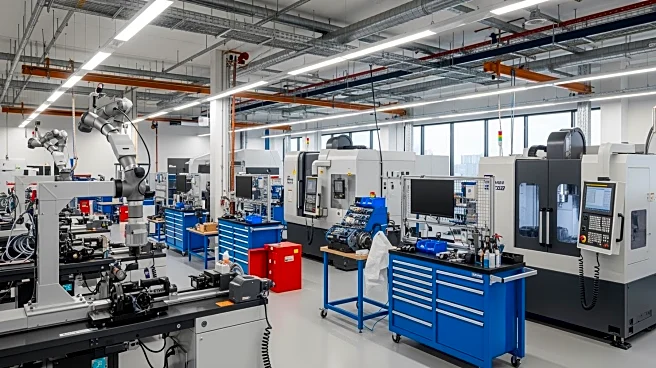What's Happening?
Erie County Executive Brenton Davis has announced a significant public investment to transform a blighted brownfield site in Corry, Pennsylvania, into a regional workforce training hub. The project, in collaboration
with the Corry Redevelopment Authority and the Enterprise Development Center of Erie County, will convert the former LTT Welding & Fabricating building into the Corry Regional Workforce Center. This center will offer training in welding, machining, and healthcare/emergency medical services. The initiative is backed by $338,698 from the American Rescue Plan Act, which will be used for brownfield remediation and site acquisition. The project aims to create a 'cross-county pipeline' for skilled workers, supporting family-sustaining careers across the region.
Why It's Important?
This development is crucial for the economic revitalization of the Corry area and surrounding regions. By converting a blighted site into a productive workforce training center, the initiative addresses both environmental and economic challenges. The project is expected to enhance the region's competitiveness by equipping residents with skills needed for high-demand sectors, thereby fostering economic growth and stability. The use of American Rescue Plan Act funds underscores the importance of strategic public investment in community development and workforce readiness, potentially serving as a model for similar initiatives nationwide.
What's Next?
The official announcement of the investment will take place on October 28 at the former LTT Welding & Fabricating building. This event will likely draw attention from local stakeholders and could prompt further collaborations aimed at regional development. As the project progresses, it may inspire additional investments in similar brownfield redevelopment projects, contributing to broader economic and social benefits for the area.
Beyond the Headlines
The transformation of the Corry site highlights the potential for public-private partnerships in addressing urban blight and economic stagnation. By leveraging federal funds for local development, the initiative demonstrates a proactive approach to community revitalization. This project could also influence policy discussions on the effective use of federal aid for sustainable economic development, emphasizing the role of workforce training in regional competitiveness.














